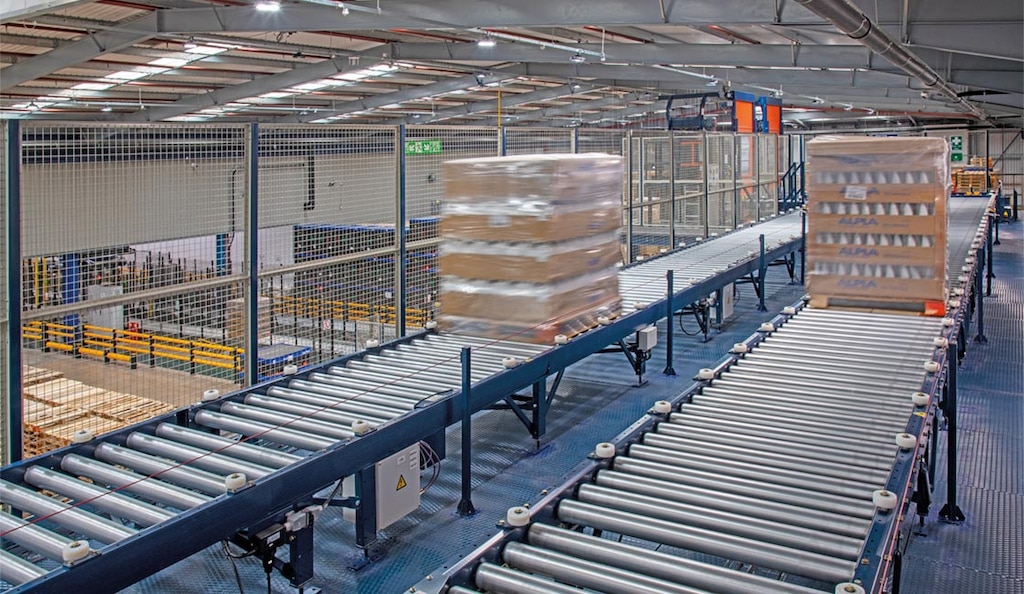
Carbon footprint: Definition, calculation, and how to reduce it
The carbon footprint has become a key indicator for measuring our impact on climate change and assessing the effects of business activities. From the energy we use to the products we make or buy, many of our actions produce greenhouse gas emissions that leave a mark on the planet.
Below, we define the carbon footprint and explain why reducing it isn’t only an environmental responsibility but an opportunity for individuals and businesses to adopt more sustainable and efficient practices.
What is a company’s carbon footprint
A company’s carbon footprint is the total greenhouse gas (GHG) emissions — expressed in metric tons of CO₂ equivalent — released directly or indirectly by an activity, product, service, or organization.
In the business world, a corporate carbon footprint helps measure the environmental impact of an organization’s operations. It covers areas such as energy consumption, transportation, waste management, and manufacturing processes.
What is CO₂ equivalent?
CO₂ equivalent (CO₂e) is a unit of measurement that expresses the climate impact of different greenhouse gases in terms of the amount of carbon dioxide that would produce the same global warming effect over a given period — typically 100 years. It’s calculated by multiplying the mass of each gas by its global warming potential (GWP).
Importance of the carbon footprint for businesses
By measuring their carbon footprint, companies can identify opportunities to improve operations, optimize resource use, and uncover potential energy savings. Additionally, transparency in reporting emissions strengthens corporate reputation. It meets the growing demands of clients, investors, and international organizations such as the United Nations Environment Program (UNEP) and the Intergovernmental Panel on Climate Change (IPCC). These efforts support commitments under the Paris Agreement to limit global warming.
Aligning corporate climate strategies with international standards — such as ISO 14067 on the carbon footprint of products — also helps companies access increasingly regulated and sustainable markets.
Carbon footprint examples
The carbon footprint is present in many everyday activities and business processes. Here are some examples that help illustrate its scope:
- Goods production. Manufacturing a cotton t-shirt can generate 4–11 lb of CO₂ equivalent, depending on fertilizer use, water consumption, and the energy involved in making and transporting it.
- Transportation. A short round-trip flight within the US can emit roughly 440–1,100 lb of CO₂ per passenger, depending on the distance and aircraft type.
- Energy consumption. An office building with electric heating and air conditioning can produce several metric tons of CO₂ per year, depending on usage and whether the electricity comes from fossil fuels or renewable sources.
- Logistics and distribution. Moving goods by truck, ship, or plane generates different emission levels. For example, shipping a standard 20-foot container by sea from Asia to the West Coast can emit over 1 metric ton of CO₂. Air freight exceeds that figure considerably.
- Food. The carbon footprint of 2.2 lb of beef can generate more than 50 lb of CO₂ equivalent. This is mainly due to methane emissions from livestock, feed manufacturing, and water and energy use during farming.
These examples show the importance of calculating and reducing the carbon footprint across the entire value chain — from production to end use.

How to calculate a company’s carbon footprint
Calculating a business’s carbon footprint involves quantifying the GHG emissions its operations generate. These emissions are typically categorized using standardized conversion factors and grouped according to the scopes defined by the GHG Protocol:
- Scope 1. Direct emissions from sources owned or controlled by the company, such as boilers, vehicles, or machinery.
- Scope 2. Indirect emissions associated with the consumption of electricity purchased from third parties.
- Scope 3. Other indirect emissions throughout the value chain, including those resulting from transporting goods or the use of sold products and services.
How to calculate your company’s carbon footprint:
- Define organizational and operational boundaries. Decide which facilities, processes, and emissions you will include in the analysis.
- Gather data. Collect information on energy use, fuel consumption, travel, waste generation, and more.
- Apply emission factors. Convert the collected data into CO₂ equivalent emissions using recognized factors (such as those from the IPCC).
- Calculate emissions. Multiply the activity data by the corresponding emission factors.
- Analyze results and identify areas for improvement. Determine which activities generate the highest emissions and develop strategies to curb them.
Using digital tools or working with specialized consultants can simplify the process, ensure accuracy, and help prepare your business to report emissions transparently.
How to reduce a company’s carbon footprint
Lowering the corporate carbon footprint calls for actions that limit GHG emissions.
- Measurement and planning. Start with a GHG emissions inventory and set clear, measurable reduction targets.
- Energy efficiency. Improve energy use through efficient technologies and responsible practices.
- Renewable energy. Switch to clean energy sources like solar or wind and purchase green energy certificates.
- Sustainable mobility. Encourage public transit, carpooling, electric vehicles, and remote work.
- Waste management. Follow the 3Rs (reduce, reuse, recycle), cut back on paper, and choose sustainable materials.
- Environmental culture. Educate employees and foster sustainable habits throughout the organization.
- Additional actions. Streamline supply chains, extend equipment lifespan, and create eco-friendly workspaces.
These steps not only lessen environmental impact — they also enhance corporate reputation and generate savings. In logistics operations, that translates into:
- Optimizing routes to lower fuel consumption.
- Using renewable energy in warehouses and distribution centers.
- Replacing lighting systems with LED technology.
- Automating processes to increase operational efficiency.
- Choosing recyclable or reusable packaging.
Interlake Mecalux’s storage and warehouse management solutions help businesses shrink their carbon footprint by automating and streamlining operations. Technologies such as stacker cranes, conveyors, and Easy WMS software reduce in-house movements and improve energy use.
A prime example is the ALPLA facility in Golborne (UK), where automation with our company’s pallet conveyors and elevators has eliminated manual transport between the warehouse and production lines. “With the logistics solution installed — automated pallet conveyors and elevators — we’ve cut our handling costs and carbon emissions drastically, making our operations greener and more sustainable,” says Liam Grimwood, UK Plant Engineering Manager at ALPLA.
Another example is Porcelanosa Group, a global leader in the ceramic tile industry. In its Venis warehouse in Villarreal (Spain), twin-mast stacker cranes for pallets can recover up to 15% of the energy they consume.

The carbon footprint: A challenge that drives change
Reducing a company’s carbon footprint isn’t just an environmental imperative. It’s also a strategic opportunity. Embracing sustainable practices helps optimize resource use, lower operating costs, and reaffirm a company’s commitment to customers, employees, and society as a whole. Every action matters, from tracking emissions to fostering a culture of sustainability. Businesses that take responsibility today are helping curb climate change in addition to building a more efficient, competitive, and resilient future.
The carbon footprint in 5 questions
What is a carbon footprint?
A carbon footprint is the total amount of greenhouse gas emissions — direct or indirect — produced by an activity, product, service, or person. It’s expressed in metric tons of CO₂ equivalent.
What’s the difference between a personal and a corporate carbon footprint?
A personal carbon footprint reflects the emissions from an individual’s daily activities (e.g., transportation or home energy use). A corporate carbon footprint covers all processes within an organization, from production to logistics and resource consumption.
Why is measuring the carbon footprint important?
Measuring emissions helps identify sources, guide improvement efforts, and meet the growing sustainability expectations of customers, investors, and international bodies.
How is a carbon footprint calculated?
The process involves identifying emission sources, categorizing them by scope (1, 2, or 3) under the GHG Protocol, and applying emission factors to estimate CO₂ equivalent in metric tons.
How can a company reduce its carbon footprint?
Companies can cut emissions through energy efficiency improvements, adopting renewable energy, minimizing waste, selecting sustainable suppliers, optimizing operations, and implementing technology solutions.
